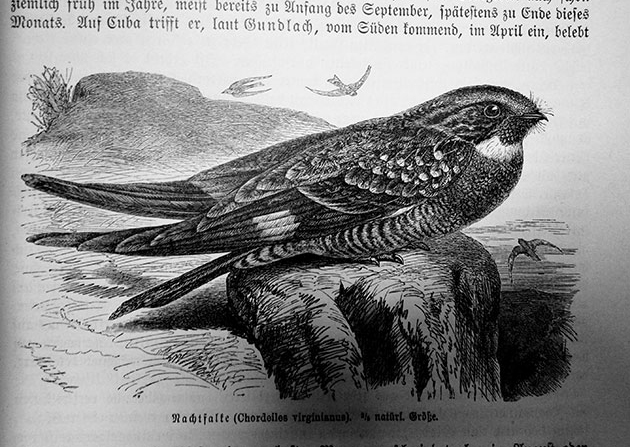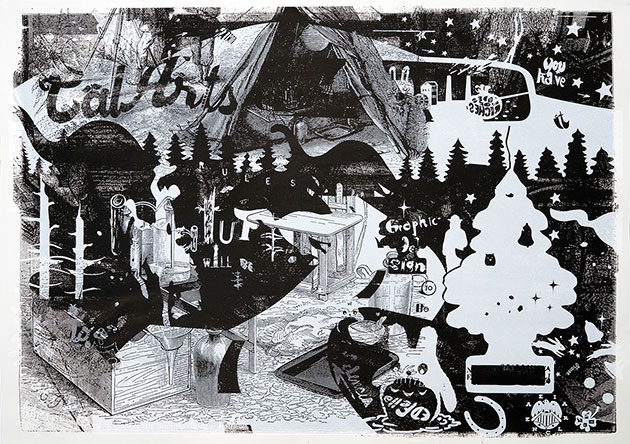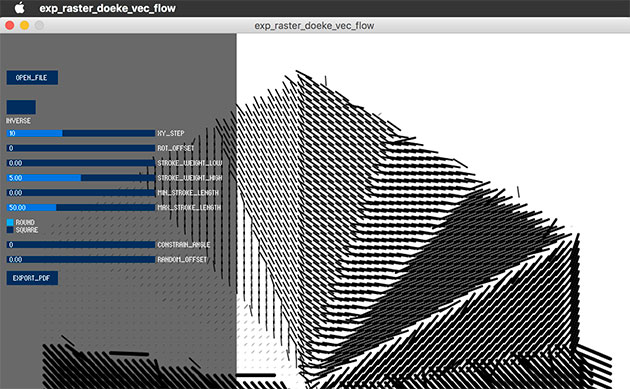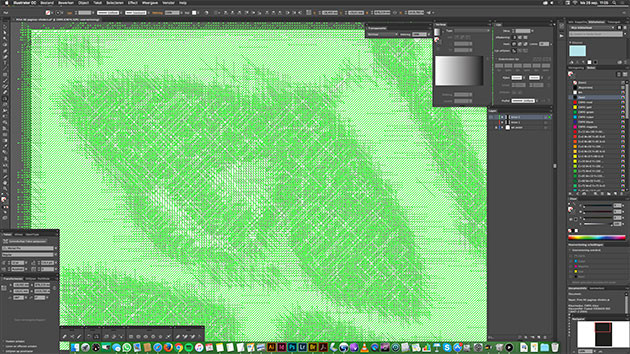Dusky Bird – 2/3 – Process

Nightjar in woodgravure, from Brehm A.E. (ca. 1911). Das Leben der Tieren, found in the library of Centre for Biodiversity Naturalis in Leiden.
Dusky Bird process, part of the 2016 Grind the Gap project.
During the 19th century, wood engravings were often used to translate existing drawings, paintings or photographs into a technical format suitable for high mass printmedia such as newspapers and magazines.
 Harmen Liemburg, Black Current 2, screenprint 84 x 120 cm, 2008.
Harmen Liemburg, Black Current 2, screenprint 84 x 120 cm, 2008.
In 2008, similar illustrations from an old library near Paris were combined with color separations from my own hand. By overlaying the strongly enlarged gravures with a halftransparant, screenprinted white, subtle greytones and intricate patterns appear.
A similar approach would surely fit my attempt to create an expressive image of the nightjar and his surroundings.
 Test with greytones 10-100% black, using the Exp_raster app.
Test with greytones 10-100% black, using the Exp_raster app.
The profession of the wood engraver is long gone, and would probably be too costly in this century anyway. Drawing the complex plumage of the nightjar in Illustrator too complex and time consuming… From this, the plan was derived to look for a programmer who could write a script that would transform (photo)graphic images to printable lines.
Doeke Wartena wrote the code for Exp_raster, an application that translates greytones into graphic shapes through a vector field. Images from various sources thus can be manipulated and transformed into patterns suitable for screenprinting.
 Huge amounts of lines… Processing an A0 files is a tough and time consuming job for my 4 GHz Intel Core i7 processor…
Huge amounts of lines… Processing an A0 files is a tough and time consuming job for my 4 GHz Intel Core i7 processor…
See also Dusky Bird Research